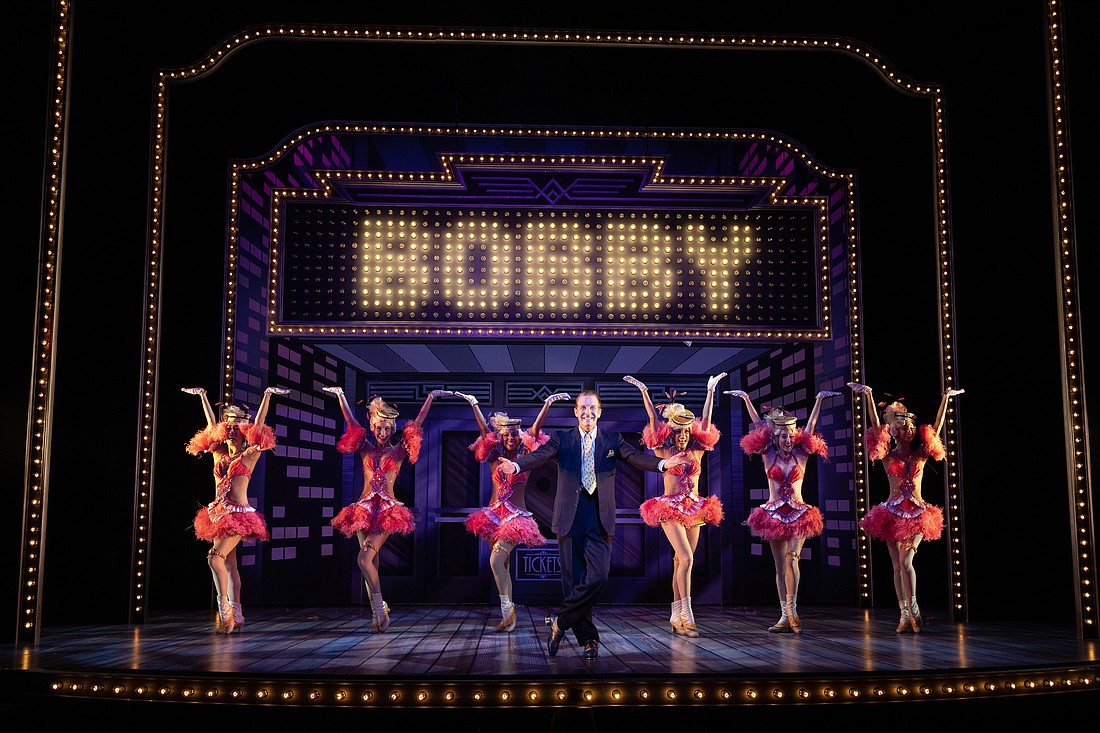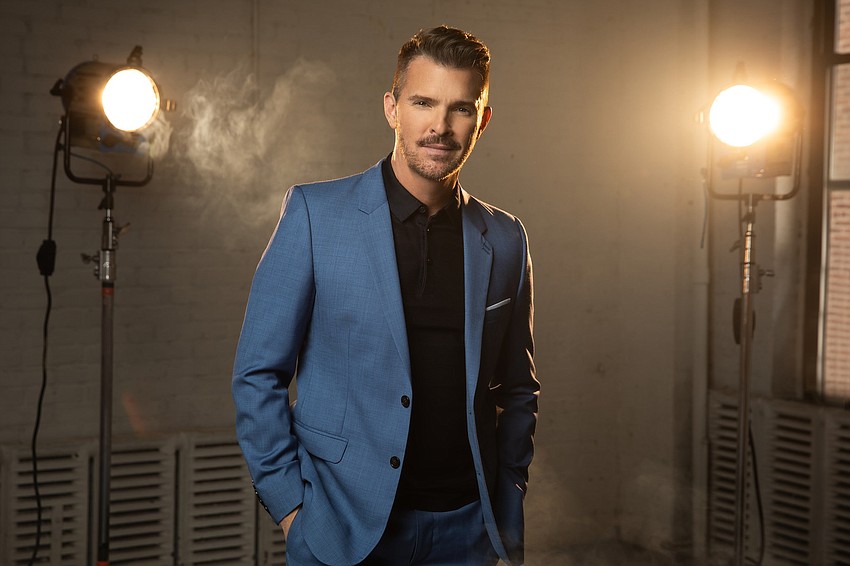- July 14, 2025
-
-
Loading

Loading

Dialogue, movement, music, dance. With these four simple tools, Denis Jones built the crazy world of “Crazy for You," Asolo Repertory Theatre’s latest production. Here’s how he did it.
The love-happy madness of Ken Ludwig’s Broadway smash is now on the Asolo Rep stage. It’s a musical comedy about reviving a defunct theater by staging a musical comedy. It’s a perennial hit, especially in the theater community. It’s one of director/choreographer Denis Jones’ favorite musicals, for obvious reasons.
Jones is currently helming the Asolo Rep production right now, having stepped in after director Josh Rhodes left to make his Broadway debut with a revival of "Spamalot."
Building worlds on the stage for "Crazy For You" draws on Jones’s full range of talents. In the following edited Q&A, he shares how he put the worlds of this and other musicals together. And why he really loves his job.
The script. That’s my starting point with any musical. I begin with a deep dive into the text. Who are these characters? What’s their journey in this musical? What’s their story? How do I tell it?
Absolutely. Because “Crazy for You” is set in the past, that informs my choreographic choices. It’s not historically realistic — not by a long shot. Even so, I still needed to familiarize myself with the dance styles of the 1930s.
For this kind of musical, dance is an essential storytelling element. Dance is in service of the musical’s text. It has to be character-driven. Narrative-driven. How characters tell their stories through movement exists in the context of a specific time and place.

Exactly. Regardless of time period, a musical’s characters shouldn’t randomly start dancing for no reason. Dance should never distract the audience from the musical’s story. Dance helps tell that story, with the language of movement. Again, I don’t consider the choreography for “Crazy For You” to be an historic document, but it should be consistent with the writer’s intent and not just exist for its own sake.
They’re all useful tools in musical storytelling. But they all need to feel of a piece, not disjointed. Each approach should flow seamlessly with the others. Going from a dialogue scene into a song and then into a dance … the transitions should never feel jarring. A musical’s story should feel like one story.
The Gershwin brothers’ amazing songs. They’re the beating heart of this musical. Their songs captured universal human experiences. The lyrics are so witty, heartfelt and stylish — and beautifully suited to storytelling. The Gershwins wrote these songs for characters to express their thoughts and longings. Everything in “Crazy for You” flows from those springs — its narrative, its characters, its outlook on life. The Gershwins’ music is at the center of the beautiful story Ken Ludwig has told.
No kidding. It’s been years since I’ve seen that movie. “Crazy For You” takes very little from that screenplay.
Ludwig took some of the characters and a great deal of the music. But “Girl Crazy” is really just his jumping-off place. “Crazy for You” is very much its own thing. It tells its own story.
Bobby Child is the central character. He’s a young, wealthy New York playboy who dreams of musical theater stardom. Singing and dancing is all he wants to do with his life. His mother would strongly prefer that he enter the family business, which is banking. Bobby winds up in Dead Rock, Nevada, a depressed small town. He meets Polly Baker, who runs a long defunct theater. To win her heart, Bobby decides to put on a show and save that theater. All manner of antics ensue. The story’s really about how Bobby finds himself — and finds a community in the process.
Yes. But the whole community, really. The townsfolk gather together to create this show. That brings new life, new spirit and a heightened sense of solidarity to their small town. This being a musical, Bobby also finds love. But he’s not alone. Love is in the air, and a number of couples find each other across different worlds — and celebrate their love in the glorious ending.
The ending does have a Shakespearean vibe. And yes, there is plenty of tap-dancing.
Absolutely. Bobby does find himself. The woman he falls in love with, Polly Baker, finds herself, too. She’s learning who she really is — and the theatrical talent passed down from her mother. Most of the people in town also find themselves. And then they find each other and form common cause. And it’s all through the power of music, dance and theater. It’s a beautiful story. I find it quite moving.
Please don’t ask me that. That like asking, “Who’s your favorite child?” If I had to pick a favorite, “Embraceable You” is incredible. During our first preview, the cast started singing it and the audience spontaneously joined in. They were standing in the aisles, just singing along —unprompted. It was moving. So, if had to choose, that song is one of my personal favorites. But I don’t want to choose.